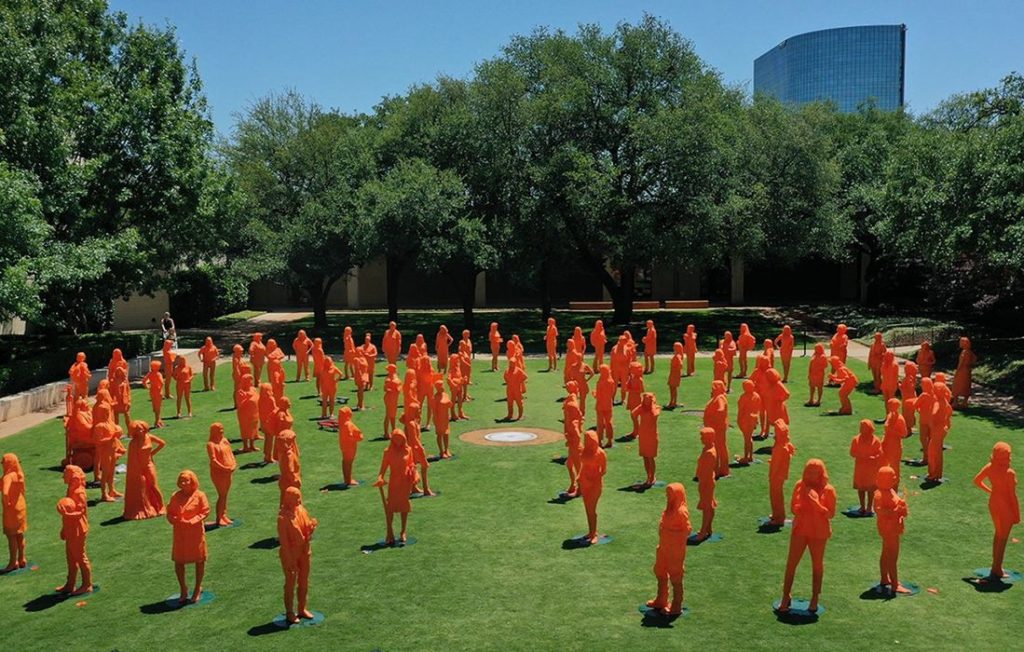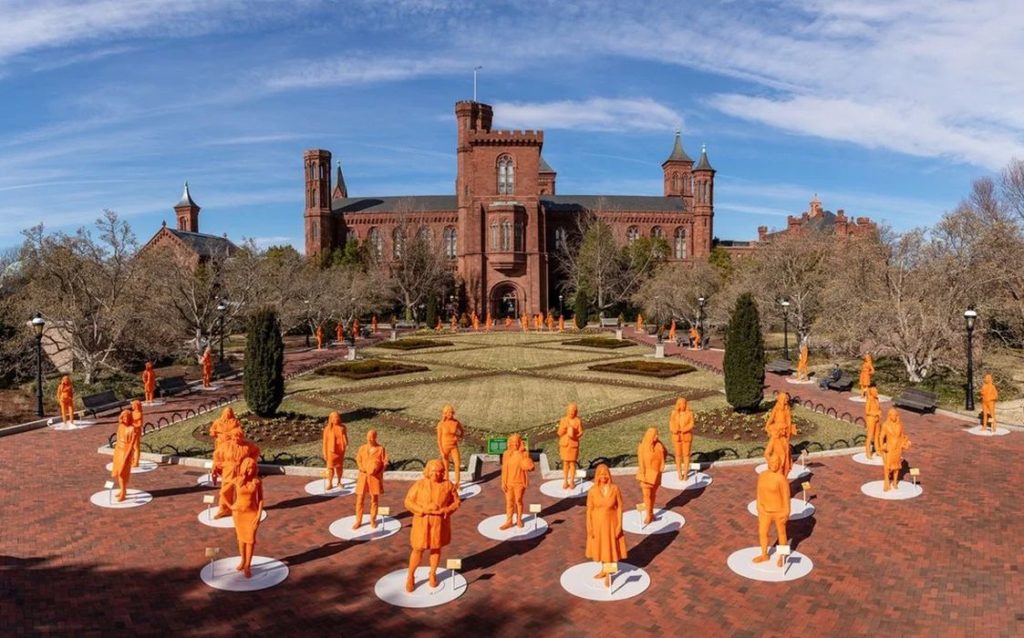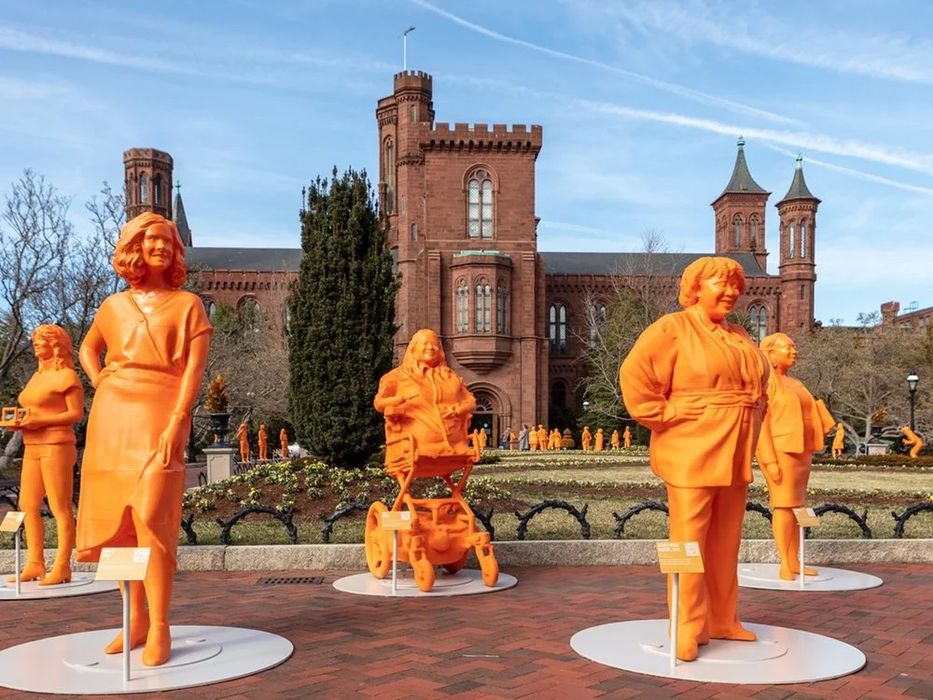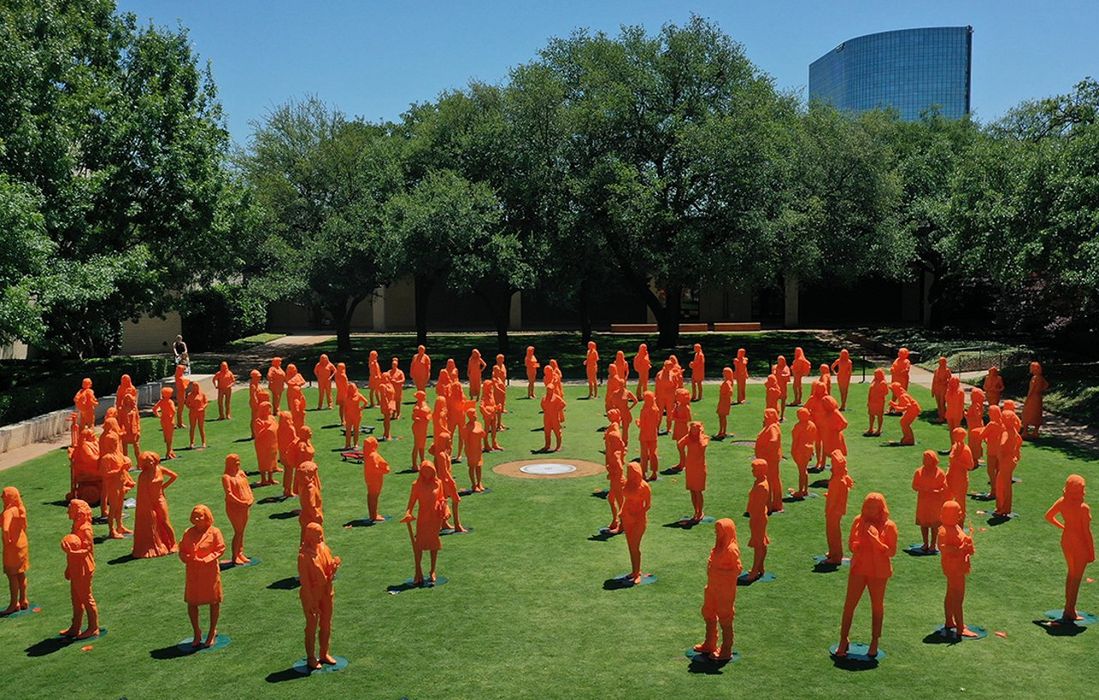
This week’s selection are the 120 3D Printed Statues of Women by the Smithsonian.
To celebrate Women’s History Month, the venerable institution in Washington DC printed an incredible 120 life-size statues of notable women working in STEM fields. The bright orange statues are now on display inside Smithsonian buildings in downtown DC until the end of the month, having been briefly on display outdoors around the Smithsonian area on the mall.
The project is officially the “#IfThenSheCan – The Exhibit”, and is a partnership between the Arts + Industries Building’s FUTURES exhibition, the National Museum of Natural History, the National Air and Space Museum, and Smithsonian Gardens. Apparently it is the largest collection of statues of women ever assembled, 3D printed or not.

The statues are of female STEM innovators and educators in a wide variety of disciplines. There is a complete list of the subjects available on the IF/THEN site, with images and titles of each featured person.
The goal of the project is to highlight the possibility of women succeeding in STEM fields, which currently have a low percentage of female participants for a variety of reasons. The hope is that by seeing the overwhelming number of these statues, some will be inspired to enter STEM that might not have otherwise.
The array of statutes is beyond impressive, and not only from a STEM point of view: producing these prints would certainly have been an astronomically challenging project.
There’s very little published on exactly how the statues were printed, but according to a report on CNET they were apparently 3D printed using acrylic gel in about 10 hours after 3D body scanning.

This is impressive, if true. 3D printing a full size body using typical 3D printing gear is a weeks-long effort to produce dozens of parts that must be assembled. If one body takes six weeks to print on a typical FFF 3D printer, then 120 bodies would take about 14 years of print time.
But how was this project accomplished?
There are plenty of methods for producing viable 3D body scans, and any of them would have been suitable, particularly because the prints are not full color. Capturing and processing the scans might have taken only a couple of weeks to complete.
The printing, however, is a different story.
It’s not stated, but I strongly suspect that these prints were produced on the huge Massivit 5000 3D printer. This device uses “GDP”, or Gel Dispensing Printing.
It’s a very rapid 3D printing process that involves squirting out a toothpaste-like photopolymer gel that is solidified with UV light shortly after deposition. This is a little different than the typical SLA processes that use fully liquid resins. Instead, Massivit’s material formula makes the resin thick and gel-like so it retains shape after deposition. Massivit says their process is about 30X faster than typical 3D printers.
Even with this very rapid, large scale 3D printer, the work required to print all 120 sculptures would have taken months to complete.
This is certainly one of the largest and most ambitious public 3D printed art projects ever undertaken, and it very likely will accomplish the goal of attracting more women to STEM fields.
Via Smithsonian

